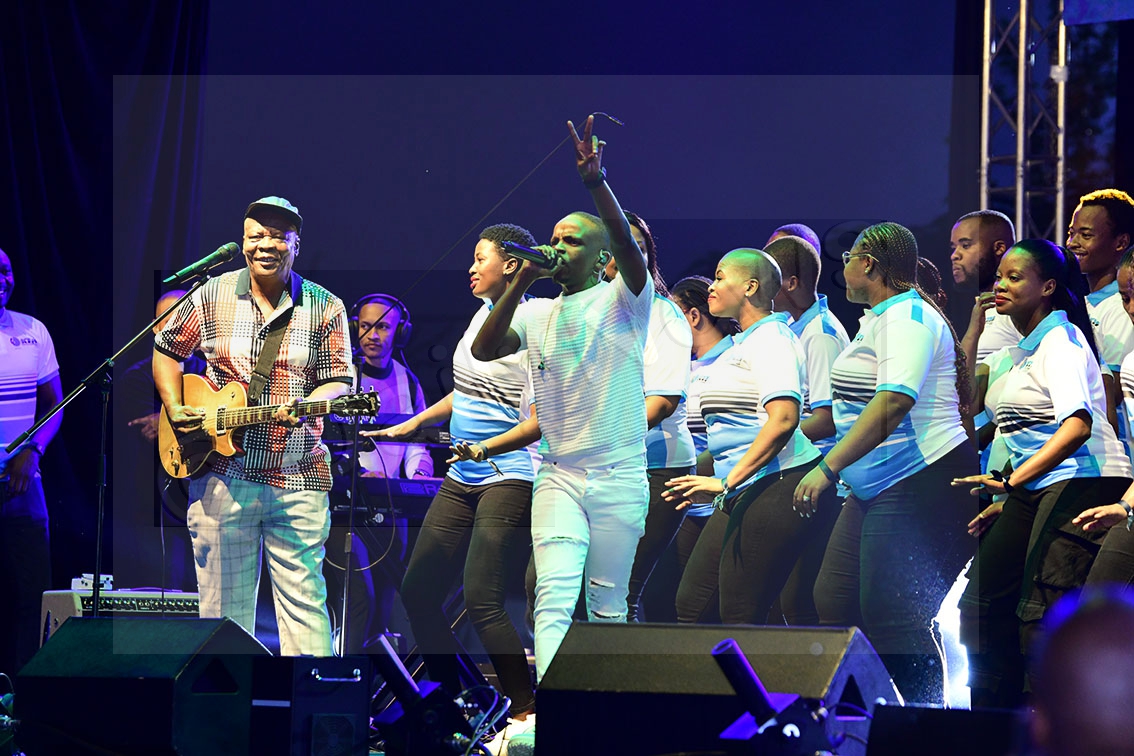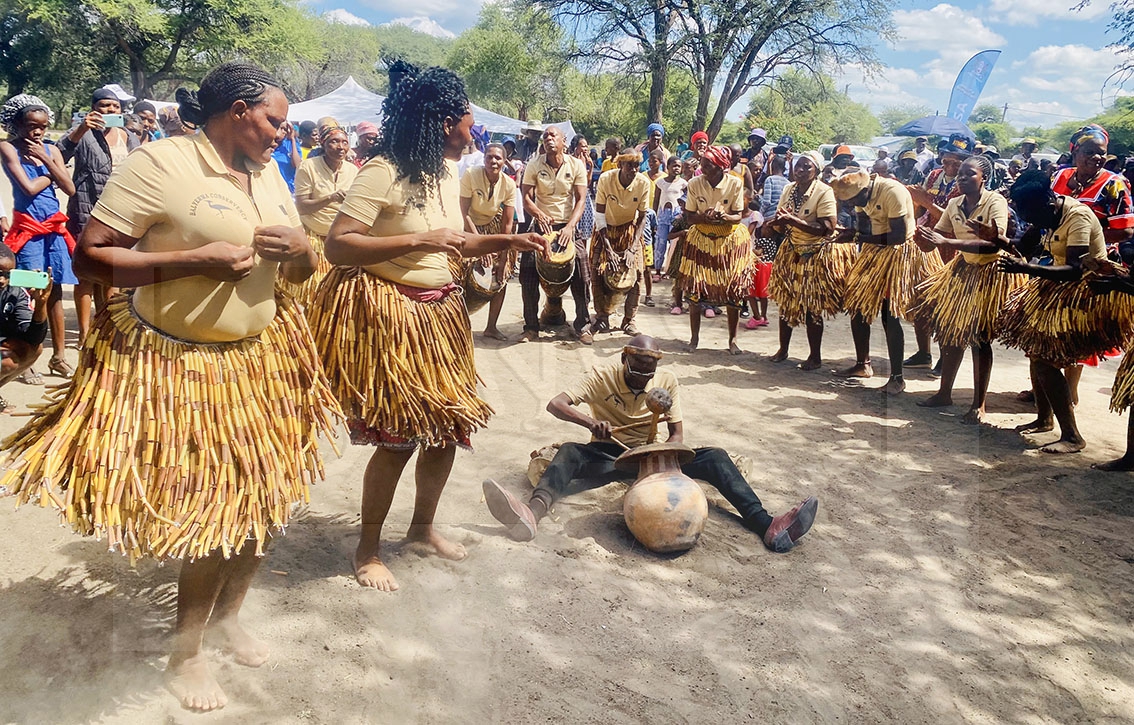Trinity Church launches 50th anniversary commemorative booklet
27 Nov 2018
The first Christian church to open its doors in Gaborone soon after the country’s independence in 1966, Trinity Congregational Church, on November 25 launched a 50th anniversary commemorative booklet.
A local church of the United Congregational Church of Southern Africa (UCCSA) located at the Gaborone Main Mall close to the civic centre, Trinity was officially opened by founding president, Seretse Khama on November 6, 1966, just five weeks after Botswana was officially granted independence from Britain, becoming the first modern Christian church structure in the then-nascent capital.
Launching the commemorative booklet, UCCSA Synod of Botswana secretary, Keleneilwe Kgerethwa said Trinity was strategically located in the centre of town and had thus played an important role in the religious and civic life of the capital.
“The UCCSA is a transnational church, and in Botswana located in different parts of the country. Trinity, located at the centre of the capital, is a centre of hope and spiritual awakening for many over the years. A lot more could be written about the history of Trinity and this is a good start to document the important role of the church over the years,” Kgerethwa said.
Trinity Church secretary, Lame Ramokate said when the church celebrated its 50th anniversary in 2016, initially a newsletter was supposed to be published, but the church later opted for a commemorative booklet. “The process of gathering the right information that could best represent our history took two years to properly collect and publish. We managed to locate the family of Rev. Derek Jones (Trinity founding minister and also the first mayor of Gaborone), who helped us with some of his written information about the foundation of the church. We also thank Mr Sandy Grant who had written before about the historical significance of Trinity for contributing key information, as did some of our first Batswana ministers who served at Trinity over the years,” Ramokate said She also revealed that initially church elder, former president Ketumile Masire had been targeted to write a foreword to the book, but upon his passing on in 2017, another elderly member, Gaositwe Chiepe was asked to contribute the foreword.
The booklet has several chapters dealing with different facets of the history of the church. After the foreword and the list of the roll of Trinity Church ministers since 1966, the first chapter “From LMS to the UCCSA: The denominational heritage of Trinity Congregational Church” deals with the history of the congregational denomination, and its historical significance in Southern Africa after the 1799 arrival of the London Missionary Society (LMS) in the region. The late Derek Jones then reflects on the foundation of Trinity, initially conceptualised in late 1964 as a ‘Gaberones Union Church’ bringing together Congregationalists, Methodists, Anglicans and Presbyterians. The Oxford-educated Jones, who came to Botswana from the United Kingdom in the 1950s to serve LMS missions in Kanye and Maun, founded Trinity and also the Botswana Book Centre and Pula Press which were operated by the church.
At Pula Press, Jones worked with Moabi Kitchin, Morulaganyi Kgasa, Mae Johnson, Martin Morolong and Zacharia Mathumo in publishing among others the Padiso series, the Setswana-English dictionary, small Bible commentaries and a revision of the Setswana Bible originally translated by Robert Moffat of the LMS a century earlier.
Sandy Grant in his chapter details the initial consultations within the Gaborone Christian community about the construction of the city’s first church. Initial discussions led by Jones involved different mainline denominations, apart from the Catholics, who had already secured land for their own Christ the King Cathedral on the other side of the Main Mall. It officially opened in 1967 to become Gaborone’s second oldest church after Trinity. The Trinity foundation stone of 1966 had been taken from Kolobeng Mission near Kumakwane, where David Livingstone had set up Botswana’s first Christian mission in 1847. The stone at the church entrance remains the cornerstone of the architecture of Trinity, whose structure was designed by Swaziland-based Francis Green under instructions from Jones of the UCCSA and Alan Butler of the Anglican Church. But the church only lasted a few years as a union church that brought together the different mainline denominations.
“The Anglicans felt that they should go it alone. The new Anglican Cathedral was constructed and consecrated, and within a short period, the Methodists too had also built their own church. Trinity, designed as a church for the united witness, was left to be used by the Congregational Church (UCCSA) alone,” Grant writes.
Live broadcast of church services through Radio Botswana is captured by Moreri Gabakgore in his chapter “Preaching to the Nation, the Early Broadcast,” while Denise Bontle Gaboutloeloe in her chapter “Worship in Song” traces the history of the Trinity Church choir and its conductors who had included luminaries such as Gomolemo Motswaledi who went on to pioneer the KTM choir.
The booklet also has a spread of pictures depicting different periods in Trinity Church history, including a portrait of founding president Seretse officially opening the church in 1966 and founding Zambian President Kenneth Kaunda accompanying Seretse for church service at Trinity in the late 1960s.
Current President, Mokgweetsi Masisi, a product of the Trinity Sunday School before relocating to the sister UCCSA church at Tlokweng, is depicted alongside Neo Masisi officially opening the Trinity 50th anniversary commemorative plaque in 2016 ENDS
Source : BOPA
Author : BOPA
Location : Gaborone
Event : Launch
Date : 27 Nov 2018







